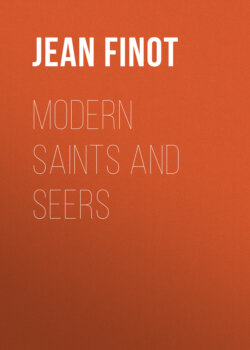Читать книгу Modern Saints and Seers - Jean Finot - Страница 26
На сайте Литреса книга снята с продажи.
A LABORATORY OF SECTS
ОглавлениеWe will now travel to the south of Russia, and examine more closely what might be called a laboratory of sects, or in other words a breeding-ground of religions whose idealism, whether foolish or sublime, is often sanctified by the blood of believers, and descends like dew from Hermon into the midst of our busy civilisation.
The mystical tendencies of the popular soul sometimes develop in a fashion little short of prodigious, and to no country do we owe so many remarkable varieties of religious faith as to that portion of Russia which lies between Kherson and Nicolaïev. There is seen in full activity the greatest religious laboratory in the world; there originate, as a rule, the morbid bacilli which invade the rest of Russia; and there do sects grow up like mushrooms, only to disappear with equal rapidity.
An orthodox missionary named Schalkinsky, who was concerned especially with the erring souls of the region of Saratov, has published a work in which he gives a fantastic picture of the events of quite recent years. He was already the author of several books dealing with the sect of the bezpopovtzi, and his high calling and official position combine to give authority to his words.
When we consider the immense variety of these sects, we can easily imagine what takes place in every small village that becomes possessed of the craving for religious perfection. Prophets, gods and demi-gods, holy spirits and apostles, all kinds of saints and mystics, follow thick and fast upon one another's heels, seeking to gain the ascendancy over the pious souls of the villagers. Some are sincere and genuinely convinced believers; others, mere shameless impostors; but all, manifesting the greatest ardour and eloquence, traverse the countryside, imploring the peasants to "abandon their old beliefs and embrace the new holy and salutary dogmas." The orthodox missionaries seem only to increase the babel by organising their own meetings under the protection of the local authorities.
Some of the sectarians will take part in public discussions, either in the open air or in the churches, but most of them content themselves with smiling mockingly at the assertions of the "anti-Christian faith" (i.e. the orthodox official religion). With the new régime conditions may undergo a radical change, but in former times religious doubts, when too openly manifested by the followers of the "new truths," were punished by imprisonment or deportation.
Sometimes the zeal of the missionaries carried them too far, for, not content with reporting the culprits to the ecclesiastical authorities, they would denounce them publicly in their writings. The venerable Father Arsenii, author of fifteen pamphlets against the molokanes, delivered up to justice in this way sufficient individuals to fill a large prison; and another orthodox missionary crowned his propaganda by printing false accusations against those who refused to accept the truth as taught by him.
In a centre like Pokourleï, which represented in miniature the general unrest of the national soul, there were to be found among the classified sects more than a dozen small churches, each having its own worshippers and its own martyrs. An illiterate peasant, Theodore Kotkoff, formed what was called the "fair-spoken sect," consisting of a hundred and fifty members who did him honour because he invented a new sort of "Holy Communion" with a special kind of gingerbread. Another, Chaïdaroff, nicknamed "Money-bags," bought a forest and built a house wherein dwelt fifteen aged "holy men," who attracted the whole neighbourhood. Many men in the prime of life followed the example of the aged ones, and retired to live in the forest, while women went in even greater numbers and for longer periods. Husbands grew uneasy, and bitter disputes took place, in which one side upheld the moral superiority of the holy men, while the other went so far as to forbid the women to go and confess to them. One peasant claimed to be inspired by the "Holy Ghost," and promenaded the village, summer and winter, in a long blouse without boots or trousers, riding astride a great stick on which he had hung a bell and a flag, and announcing publicly the reign of Anti-Christ. In addition the village was visited by orthodox missionaries, but, as the Reverend Father Schalkinsky naïvely confesses, "the inhabitants fled them like the plague." They interviewed, however, the so-called chiefs of the new religions, who listened to them with gravity and made some pretence of being convinced by the purveyors of official truth.
